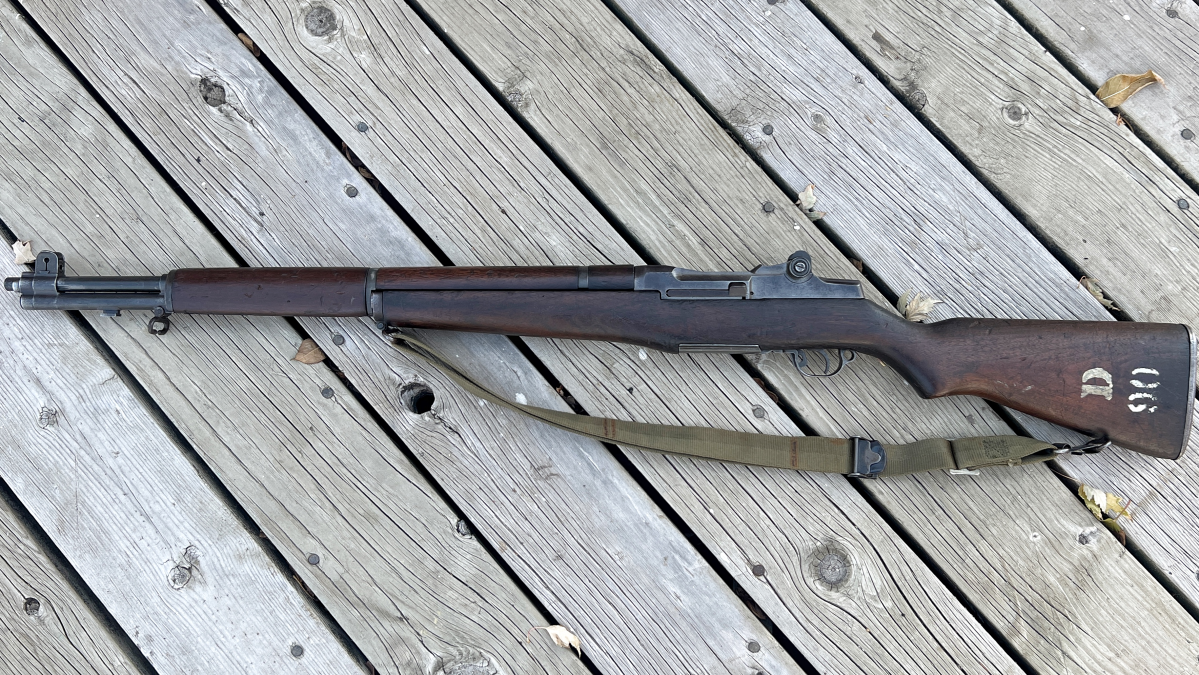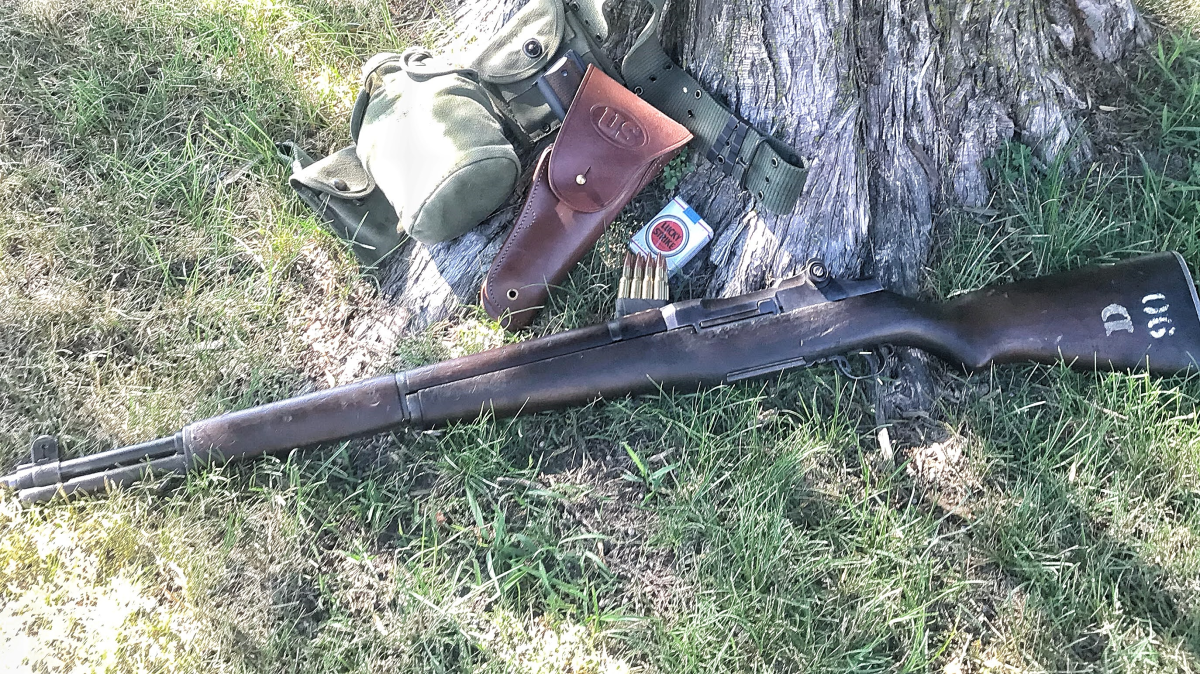Curious Relics #051: Almost a Different Caliber – The M1 Garand
Sam.S 11.02.22

Welcome, if you are a newcomer to this fun bi-weekly segment of AllOutdoor.com! The last time around was a quick couple of articles covering the West German J.P. Sauer & Sohn Western Marshal and its wider history and variations. Today we get to run through one of the most beloved pieces of American history. A silhouette of the rifle itself would give it away instantly. I of course am referring to the U.S. Rifle, Caliber .30, M1. It is much better known as the M1 Garand! The developmental history of this gun alone warrants a large amount of the word count for today. That being said, I apologize if I miss or gloss over some instances in the name of the overall flow. Let’s dive right into the M1 Garand!
Welcome to our recurring series of “Curious Relics.” Here, we want to share all of our experiences, knowledge, misadventures, and passion for older firearms that one might categorize as a Curio & Relic – any firearm that is at least 50 years old according to the ATF. Hopefully along the way you can garner a greater appreciation for older firearms like we do, and simultaneously you can teach us things as well through sharing your own expertise and thoughts in the Comments. Understanding the firearms of old, their importance, and their development which lead to many of the arms we now cherish today is incredibly fascinating and we hope you enjoy what we have to share, too!
History Abridged: M1 Garand
After the end of World War One, the United States military made the decision that it wanted to update its standard-issue infantry rifle drastically. When war broke out in 1914 (the United States was neutral) the United States was drastically unprepared to fight overseas if it was deemed necessary. The standard issue infantry rifle was the M1903 Springfield rifle chambered for the 30-06 cartridge. It utilized many of the same mechanical features as the Mauser 98 (the US even got sued over it) but most notably it was a bolt action rifle with a five-shot internal magazine fed by stripper clips. By the time the United States entered World War One, they still did not have enough of their own infantry rifle to give out to all the soldiers going to war. This is because up until that time we had been manufacturing small arms for different countries. More M1917 rifles (American-made Enfield rifles converted to 30-06) were in American solider’s hands than our own M1903.
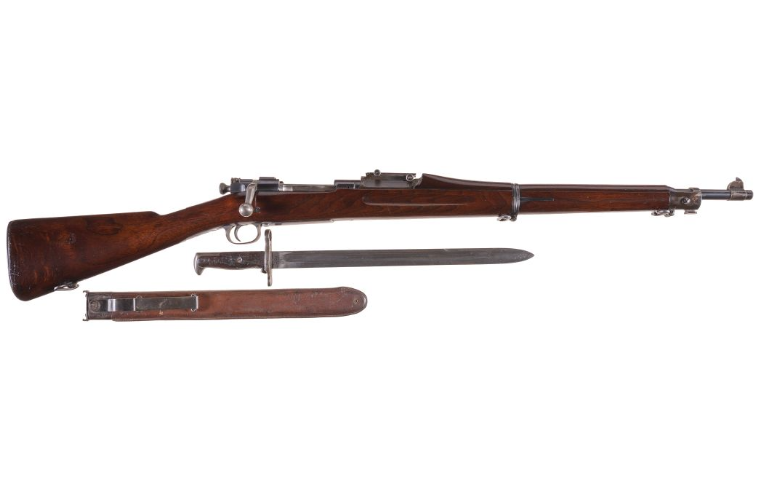
Lot 3749: Springfield Model 1903 Bolt Action Rifle – U.S. Very Early Production Springfield Model 1903 Bolt Action Rifle Serial Number 172 in .30-06 Alteration with 1906 Dated Bayonet. (n.d.). Rock Island Auction Company. photograph. Retrieved November 2, 2022, from https://www.rockislandauction.com/detail/77/3749/springfield-model-1903-bolt-action-rifle.
In 1919 a brilliant Canadian-born mind joined the ranks of Springfield Armory. His name was Jean Cantius Garand (he went by John C. Garand). To put it expediently, he tinkered with firearms design throughout the 1920s. Most notably he designed a very elegant and well-made semiautomatic rifle that many call a precursor to what would become our topic today. It was a self-loading rifle that was primer actuated. It had real promise but the whole “primer actuated” portion is what really held it back. Primer-actuated guns use the primer itself to assist in cycling an action. Think of the primer as a piston of sorts. It would literally move backward and protrude out of the primer pocket. This presented a problem when the United States ordnance department made it so all military ammunition have primers that were staked in place to prevent falling out when introduced to rapid fire vibrations. This is what ended what is referred to as the Model 1924.
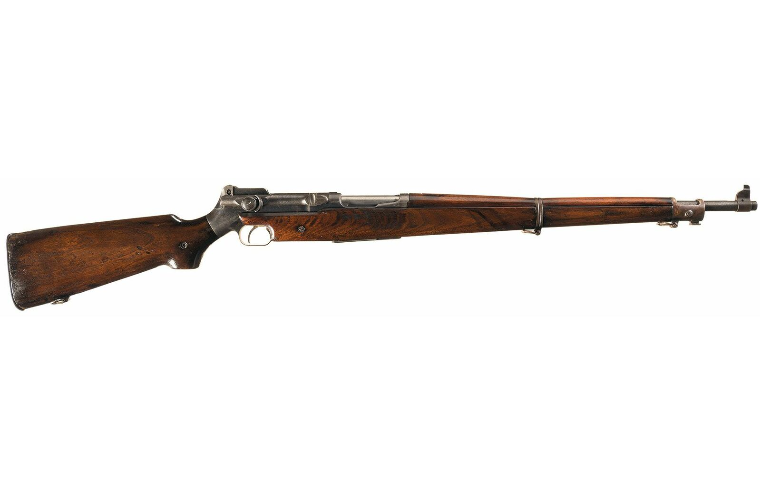
Lot 1363: Springfield Armory U.S. – 1924 Garand Autoloading Rifle – Historic and Extremely Rare Prototype U.S. Springfield Armory Garand Primer-Actuated Semi-Automatic Rifle. (n.d.). Rock Island Auction Company. photograph. Retrieved November 2, 2022, from https://www.rockislandauction.com/detail/74/1363/springfield-armory-us-1924-garand-autoloading-rifle.
Fast forward to 1929 and John C. Garand had been working on a whole new rifle minus the primer actuated function. It was put to the test in a large military rifle trial which pitted all “modern” semi-automatic rifles against each other. Most simply did not fair well at all and Garand’s rifle (referred to as the T3) had some issues too but not as much so it came down to two big standouts. One was John C. Garand’s T3 and the other was John Pedersen and his Toggle Locked Pedersen Rifle.

Lot 3300: Vickers-Armstrong Pedersen Self-Loading Rifle – Scarce Vickers-Armstrong Pedersen Self-Loading Rifle. (n.d.). Rock Island Auction Company. photograph. Retrieved November 2, 2022, from https://www.rockislandauction.com/detail/85/3300/vickersarmstrong-pedersen-selfloading-rifle.
By 1932 these two rifles continued to battle their way through trials. At this point, the Garand was called the T3E2 and it was chambered in a .276 cartridge just like the Pedersen rifle was. There was a lot of interest in this new .276 cartridge since it delivered a very similar ballistic performance as the m30-06 cartridge but without the heavy recoil or requiring a larger gun. It was less brutal than 308 Win but more so than 7.62×39. In the end, however, the Chief of Staff of the United States Army, Douglas MacArthur would completely erase any hopes of this new wonder cartridge since it would not interchange with any of the 30-06 firearms in service. It was not financially or productively efficient to adopt a new rifle in a completely different cartridge no matter how well it performed.

Lot 1649: Springfield Armory U.S. T3E2 Rifle 276 – Extremely Rare 1931 Dated Springfield Armory Prototype Model T3E2 Semi-Automatic Rifle in .276 Caliber. (n.d.). Rock Island Auction Company. photograph. Retrieved November 2, 2022, from https://www.rockislandauction.com/detail/67/1649/springfield-armory-us-t3e2-rifle-276.
Douglas MacArthur’s decision cemented John C. Garand and his rifle in the history books. This is mostly due to the fact that John Pedersen was away in Europe promoting his rifle to other militaries and was unable to quickly adapt his rifle to the new requirement. John C. Garand, however, already had a prototype worked up and on hand since he saw this coming. It continued to perform well and by all sources, I have seen it was more favored than the Pedersen rifle was anyway. It was easy to disassemble. Parts came apart in assembly chunks for easy cleaning or swapping if a breakage occurred. Its en bloc clips were enjoyable and easy to teach to new recruits. The sights were easy to adjust on the fly and it was overall a sturdy and well-made rifle. Most complaints did not have much to do with function, but more with design. It had gaps behind the bolt where debris could enter and the operating rod was exposed to the elements.
The first officially adopted Garand rifle is commonly called the Model 1936 although its official name was the U.S. Rifle, Caliber .30, M1. This first series of rifles are known as the “gas trap Garands’ since they technically work off a different system than the majority of the ones you see out in the world. John C. Garand wanted to avoid gas impingement via a hole in the barrel venting gas for cycling the piston and operating rod. This was because at that time it was thought that it was a lesser operating system that would wear out faster or affect accuracy over time. Today, we know that this is not the case since a great many modern firearms use this. The gas trap rifles had a hollow portion just in front of the end of the barrel that was meant to capture gas vented out the front of the barrel and cycle the action. These gas trap rifles were manufactured as a whole until 1939 and it is estimated that roughly 18,000 total rifles were produced.
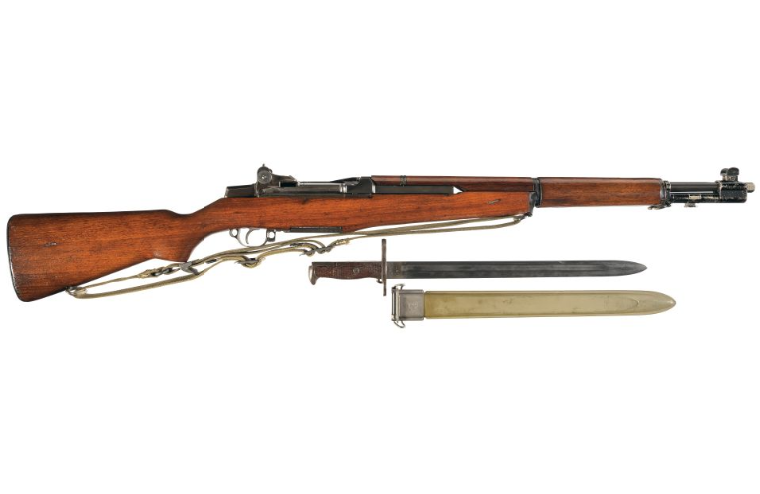
Lot 3538: M1 Gas Trap M1 Garand Rifle Rare Early Gas Trap M1 Garand Semi-Automatic Rifle with M1905 Bayonet and Scabbard. (n.d.). Rock Island Auction Company. photograph. Retrieved November 2, 2022, from https://www.rockislandauction.com/detail/83/3538/m1-gas-trap-m1-garand-rifle.
The reason there was an engineering change in favor of the common gas port apparatus was due to the unreliability of the gas trap system. It was no fun to clean, it would come loose and get shot off of the rifles, and the front sight was found to shift while firing. Unfortunately, parts for the gas trap rifles were made in mass so spare parts continued to be put onto rifles and this brings the new estimated production to roughly 51,000. Those were made well into 1940 and saw service at the beginning of the war in the hands of the Army. As rifles came in for repair they were retrofitted with the gas port system.
The M1 Garand rifle is often credited as the thing that won the war for the US but it obviously cannot have all the credit. It was a very good rifle and it was praised and beloved by troops. A famous supporter of the M1 Garand was General George S. Patton who called it “the greatest battle implement ever devised”. The M1 Garand would come to be manufactured by a whole host of different entities throughout World War Two. Its reliability, rapidity, and rigidity were renowned and well-regarded. So much so that the design was copied (notably by the Japanese) during and after World War Two. It went on to see usage in the Korean war and in some instances in Vietnam. The M1 Garand would eventually be replaced by a permutation, the M14, in 1958. A whole two decades’ worth of hard use. The overarching design features led to rifles such as the M1 Carbine, M14, Beretta BM59, and the later Ruger Mini 14.
End of Part One: M1 Garand
The M1 Garand is as much a piece of pure Americana as drive-in movie theaters, milkshakes, burgers, muscle cars, and baseball. It is beloved by veterans of any branch and any tour of duty. It is nostalgia and remembrance to relatives of such veterans who may have handed down such a magnificent tool. Today, it is one of the most recognizable and sought-after pieces of history sitting on a gun rack. Wood and metal, walnut and steel, eight whole rounds of 150-grain projectiles. What a weapon!
Note: Some M1 Garand rifles are still available through the CMP. If you are curious how to get yourself one from them please feel free to read through this article I wrote a while back when I got mine!
In closing, I hope our Curious Relics segment informed as well as entertained. This all was written in hopes of continued firearm appreciation and preservation. We did not just realize how guns were supposed to look and function. It was a long and tedious process that has shaped the world we live in. So, I put it to you! Is there a firearm out there that you feel does not get much notoriety? What should our next Curious Relics topic cover? As always, let us know all of your thoughts in the Comments below! We always appreciate your feedback.
